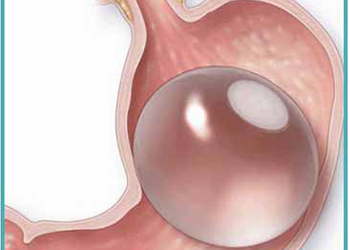Obesity balloon placement

Obesity Balloon Placement: A Weight Loss Tool
Obesity balloon placement is a minimally invasive weight loss procedure used to help people with obesity lose weight. It’s considered a supportive tool alongside lifestyle changes like diet and exercise.
Here’s a breakdown of the procedure:
What is an Obesity Balloon?
A soft, silicone or polyurethane balloon is inserted into your stomach. Once inflated with saline solution (saltwater) during a brief endoscopic procedure, the balloon takes up space in your stomach, promoting feelings of fullness and reducing the amount of food you can eat at once. This can lead to decreased calorie intake and weight loss.
Types of Obesity Balloons:
There are two main types of obesity balloons:
- Single balloons: These balloons are inflated during the procedure and remain in place for 6-12 months. They are then deflated and removed endoscopically.
- Double balloons: These balloons are connected and inflated with different volumes of gas or fluid. They typically stay in place for up to 4 months before being naturally excreted through your stool.
Who is a Candidate for Obesity Balloon Placement?
This procedure may be suitable for adults with a Body Mass Index (BMI) of:
- 30-40 kg/m² with one or more weight-related health problems like type 2 diabetes or sleep apnea.
- 27-30 kg/m² if they haven’t been successful in losing weight with lifestyle changes alone.
Procedure for Obesity Balloon Placement:
The process is generally simple and performed on an outpatient basis:
- Anesthesia: You’ll likely receive mild sedation to keep you comfortable during the procedure.
- Endoscopy: A thin, flexible tube with a camera (endoscope) is passed through your mouth and into your stomach.
- Balloon Insertion: The deflated balloon is inserted through the endoscope and positioned in your stomach.
- Balloon Inflation: The balloon is then filled with saline solution or gas through a catheter attached to it.
- Endoscope Removal: Once inflated, the endoscope is carefully removed from your mouth.
Benefits of Obesity Balloon Placement:
- Minimally invasive: Compared to weight loss surgery, balloon placement is a less invasive procedure with a shorter recovery time.
- Promotes weight loss: The balloon can help you feel fuller sooner and eat less, leading to weight loss.
- Improvement in weight-related conditions: Weight loss achieved through the balloon can improve conditions like type 2 diabetes, sleep apnea, and high blood pressure.
- Reversible: Unlike some weight loss surgeries, the balloon is temporary and can be removed if needed.
Risks and Complications:
As with any medical procedure, there are potential risks associated with obesity balloon placement. These include:
- Nausea and vomiting
- Abdominal pain
- Cramps
- Feeling of fullness or blockage
- Esophageal ulcers (rare)
- Balloon deflation or rupture (rare)
